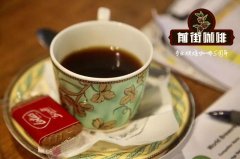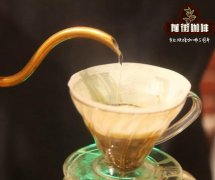Whether 30 ℃ 60 ℃ or 90 ℃ should be used to make coffee foam is more suitable for different temperature performance.
Professional coffee knowledge exchange more coffee bean information please follow the coffee workshop (Wechat official account cafe_style)
We often say that the best temperature for making milk coffee is about 50-70 ℃. Why is this? Today, the editor will discuss this issue with you.
The editor sent four cups of milk bubbles at different temperatures to observe the process of foam disappearing over time. The temperature of milk is 90 ℃, 60 ℃, 30 ℃ and 12 ℃ respectively.
The process of foaming milk:
(the picture above shows the time when the defoaming begins)
In the case of 90 ℃, the foam will expand rapidly even if the foam is not deliberately foamed when it is over 70 ℃, and the temperature will continue to tumble. When it is close to 90 ℃, Xiaobian's milk has already spilled out of the milk tank (pictured above), stopping at 94 ℃. There are obvious traces of defoaming in about 1 minute and 30 seconds.
60 ℃ of the situation is: this is our more commonly used temperature, according to the routine operation of milk foam, feel hot stop, the temperature is 63 ℃. Obvious defoaming marks appeared in about 10 minutes and 50 seconds.
The case of 30 ℃ is: foaming according to the conventional method, the feel temperature is warm, and the stop temperature is 33 ℃. Obvious defoaming marks appeared in about 4 minutes and 20 seconds.
In the case of 12 ℃, we use the milk directly from the refrigerator, using a manual hairdresser, the temperature of which is 8 ℃, and the temperature after discharging is 12 ℃. Obvious defoaming marks appeared in about 5 minutes and 15 seconds.
After observing the milk bubbles, the editor chose three temperatures of milk bubbles to put in the coffee for comparison.
The editor tested the boutique espresso beans from Qianjie (roasting degree: medium and deep roasting; coffee beans: 100% Arabica Columbia 4: Brazil 6).
Espresso: 40 grams, extraction time: 25 seconds.
In the case of 80 ℃, the foam is very thick, the foam on the wall of the cup disappears obviously, and the foam pattern is slightly diffused. The defoaming time is about 2 minutes and 30 seconds.
In the case of 60 ℃, the foam does not change after it has disappeared to a certain extent, and the foam is still very dense to see small bubble eyes. The pattern of the foam will spread a little bit outward, similar to 80 ℃. The defoaming time is about 6 minutes and 15 seconds.
In the case of 40 ℃, the foam does not change to a certain extent, and the foam is slightly thicker than that of 60 ℃, and the spread of the foam pattern is more obvious. The defoaming time is about 3 minutes and 45 seconds.
Through the above experiments, we can draw the conclusion that the state persistence of milk foam in the range of 50-70 ℃ is the best either in pure milk or after adding coffee, for two reasons: first, there is sufficient mixing time between milk foam and milk liquid; second, during the period when milk begins to denaturation but does not reach irreversible denaturation, the stability is higher.
There are two kinds of proteins in milk: whey protein and casein; whey protein begins to denature at more than 60 ℃. So when we send it to about 90 ℃, the protein is not elastic enough, so the foam will dissipate faster.
When the foam is sent to about 30-40 ℃, the foam dissipates relatively quickly due to the lack of mixing time between the foam and the milk liquid after foaming.
The reason for the rapid defoaming of frozen milk bubbles is that we use manual hair clips, and the degree of mixing cannot be compared with that of high-speed mixing of steam rods, and the degree of fusion is not high. in addition, the period of transition from low temperature to room temperature is a heating process for milk bubbles, oppressed by external heat, and the internal gas expands by heat, so the explosion of milk bubbles is more obvious.
Therefore, the ideal temperature for a cup of milk coffee is within the range of 50-70 ℃, and it is also suitable for the entrance temperature, which is neither hot nor too cold.
END
Important Notice :
前街咖啡 FrontStreet Coffee has moved to new addredd:
FrontStreet Coffee Address: 315,Donghua East Road,GuangZhou
Tel:020 38364473
- Prev

Why do you need a cup test for coffee? Several principles of coffee cup measurement method and cup time measurement to judge coffee
For information, please follow the coffee workshop (Wechat official account cafe_style) Coffee Cupping, which is a very magical and simple method for coffee sensory evaluation. The quality of coffee is judged by the sense of taste, which is called coffee cup test. The main purpose of the cup test is to find out whether there are defects in the coffee; to distinguish the acidity, sweetness and touch of the coffee; to capture the coffee.
- Next

Can I grow coffee anywhere? How to grow coffee beans? coffee beans are suitable for growing strips.
For information, please pay attention to Coffee Workshop (Wechat official account cafe_style) Coffee is a perennial evergreen shrub or small tree of Rubiaceae. It is a horticultural perennial cash crop with the characteristics of fast growth, high yield, high value and wide market. Wild coffee trees can grow up to 5 to 10 meters high, but most of the coffee trees planted on the manor are cut to increase fruit and facilitate harvesting.
Related
- Beginners will see the "Coffee pull flower" guide!
- What is the difference between ice blog purified milk and ordinary milk coffee?
- Why is the Philippines the largest producer of crops in Liberia?
- For coffee extraction, should the fine powder be retained?
- How does extracted espresso fill pressed powder? How much strength does it take to press the powder?
- How to make jasmine cold extract coffee? Is the jasmine + latte good?
- Will this little toy really make the coffee taste better? How does Lily Drip affect coffee extraction?
- Will the action of slapping the filter cup also affect coffee extraction?
- What's the difference between powder-to-water ratio and powder-to-liquid ratio?
- What is the Ethiopian local species? What does it have to do with Heirloom native species?

